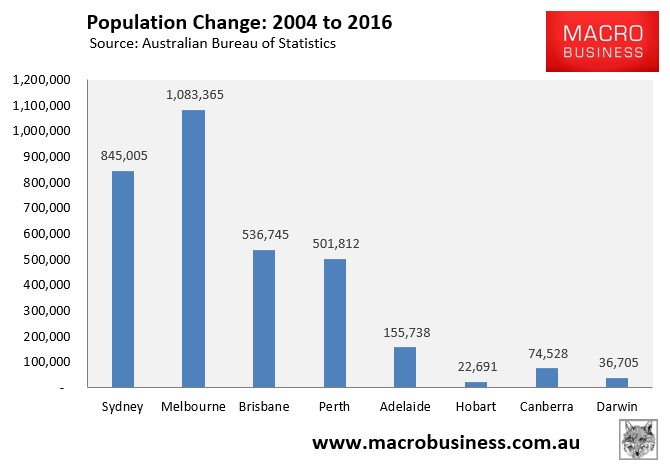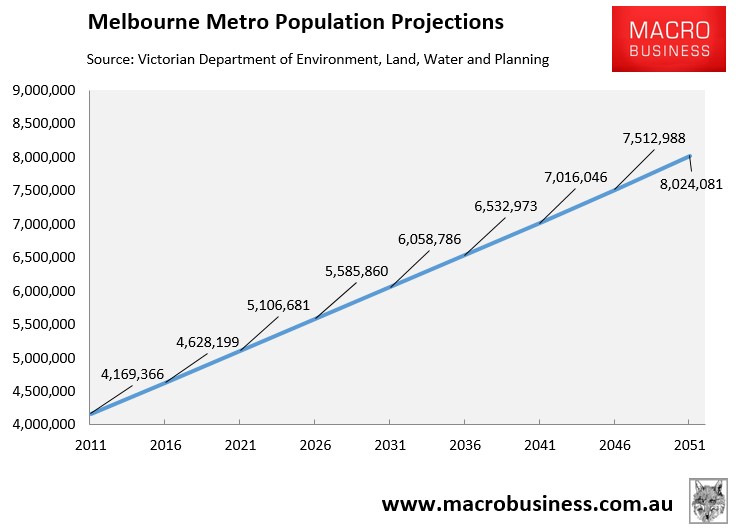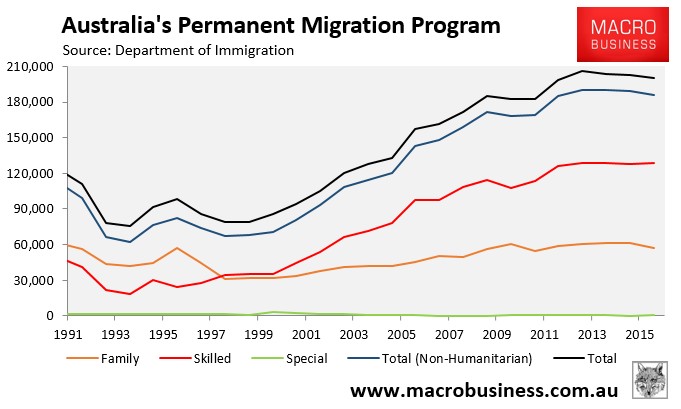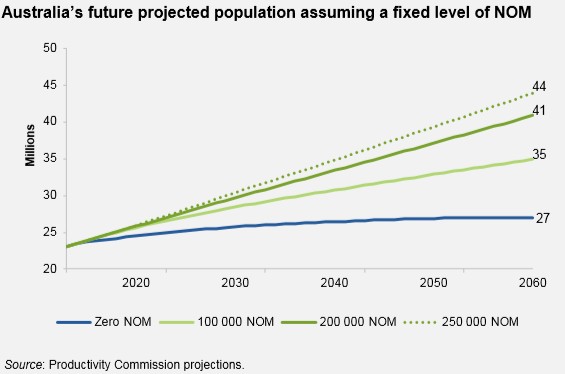The Australian’s Judith Sloan has penned another great article yesterday on the destruction of living standards being inflicted in Australia’s big cities from the federal government’s mass immigration ‘Big Australia’ policy:
I have spent most of my life living in Melbourne… Take it from me, Melbourne is in the process of moving from being one of the most livable cities in the world to one of the most unlivable…
There is no doubt the primary reason for Melbourne’s loss of livability is the excess growth of its population, which has been apparent for at least a decade, but has accelerated in recent times…
So what are the undesirable features of the galloping rate of growth of Melbourne’s population?
For starters, the new infrastructure projects that would normally be associated with such strong population growth have struggled to keep up. Think schools, hospitals, additional public transport and roads, particularly those linking different parts of the city — the list goes on.
The congestion on the roads and public transport at certain times of the day and week is something to behold. If I take the train to the city during peak times, the experience is akin to travelling in a sardine can…
Driving is equally unbearable. Consider also the developments that have been allowed to occur in our precinct. On the arterial roads, the big houses have been sold, pulled down and replaced mostly by tacky-looking, albeit expensive, apartment blocks.
Nothing else has changed in terms of the local schools, local transport, local shops and other local amenities. There are many more people living in the area, but none of the supporting facilities has been altered…
But it’s not entirely clear that these benefits are showing up in the economic statistics… the performance of the Victorian economy is only mediocre…
Bear also in mind that the diseconomies of strong population growth, coupled with inadequate infrastructure provision, mean many Melburnians simply don’t feel as if their wellbeing is improving.
…it is as plain as day that the annual migration program — the permanent migrant intake — must be cut from 190,000, the figure that is in place for this financial year and the next three after that.
This number is simply too high given that almost all migrants head for Melbourne and Sydney…
The only surprising aspect is why our political leaders have delayed the decision to cut the number of migrants. After all, Australia has nearly three times the population growth of the average of developed countries. Why this is sensible has never been properly explained.
But what about the “cultural enrichment” and “vibrancy”, Judith? Think of the culture!
But seriously, everything that Judith Sloan has said is spot on. The 30% increase in Melbourne’s population in the 12 years to 2016 – almost one million people – is clearly unsustainable:

The same can be said for the projected 97,000 people per year (1,870 people per week) increase in Melbourne’s population over the next 35 years, which would add the equivalent of around 9 Canberras or 2.5 Adelaides to the city’s population:

The macro-economic data shows that the population explosion is not boosting individual Victorians’ (Melbournians’) living standards (see here), but is greatly reducing their broader living standards via the problems of congestion, eroded public services, deteriorating housing affordability, and overall lower amenity.
The simple solution to alleviating the population pressures being inflicted in our big cities is to normalise Australia’s immigration program by returning it to the level that existed before John Howard and successive government ramped-up the intake in the early 2000s:

Even if the permanent migrant intake was halved to 100,000 people – still a very generous intake – than Australia’s population would grow to around 35 million by 2060 versus over 40 million under current projections:

Such growth would be far more manageable and easily digestible than the turbo-charged mess that is currently being created and mis-mananged.
It’s time that our politicians stopped ignoring the issue. Our living standards are at stake.

